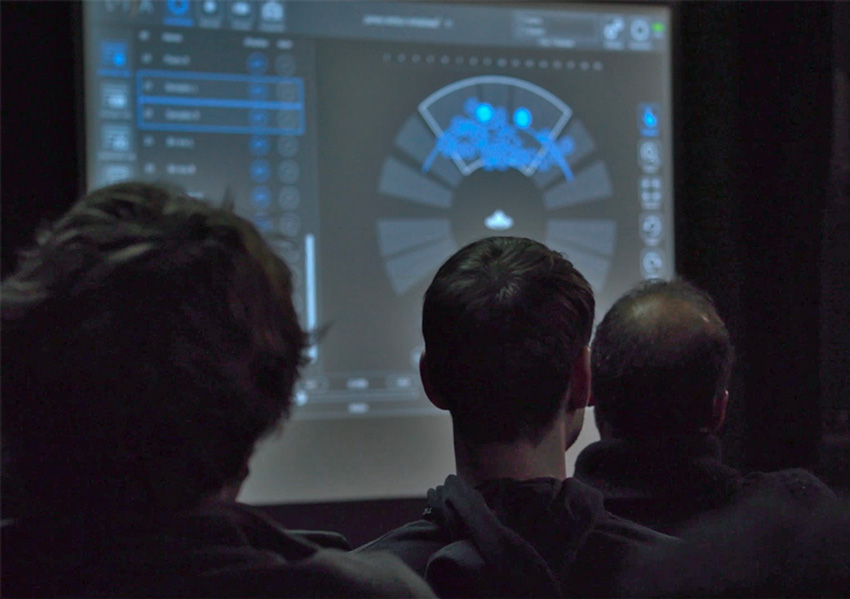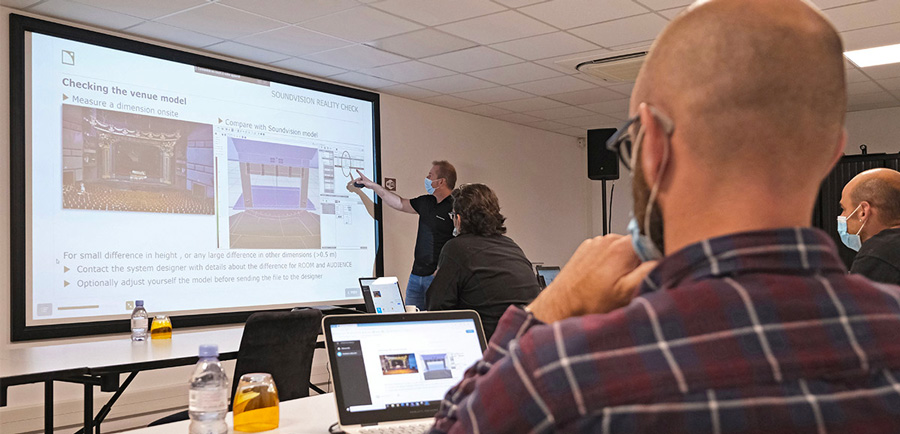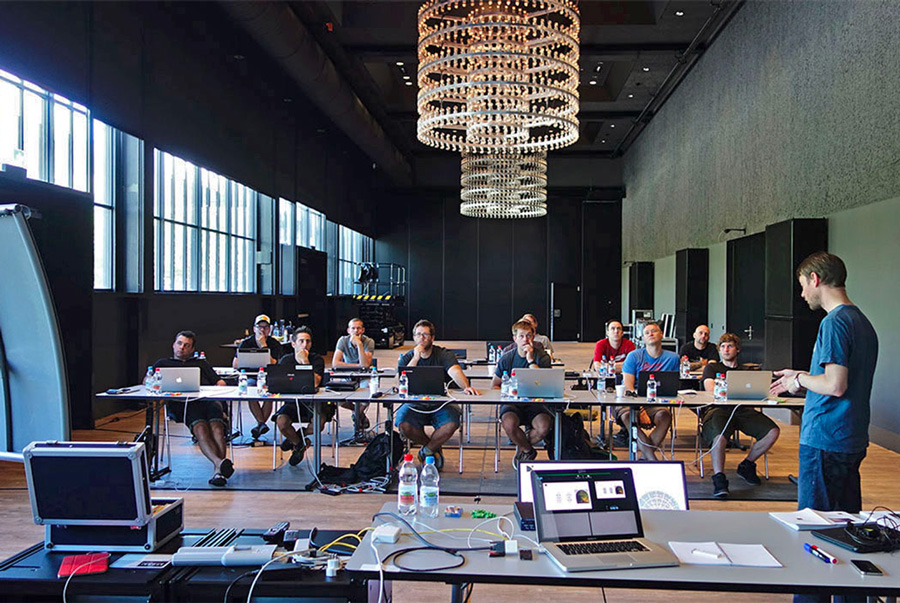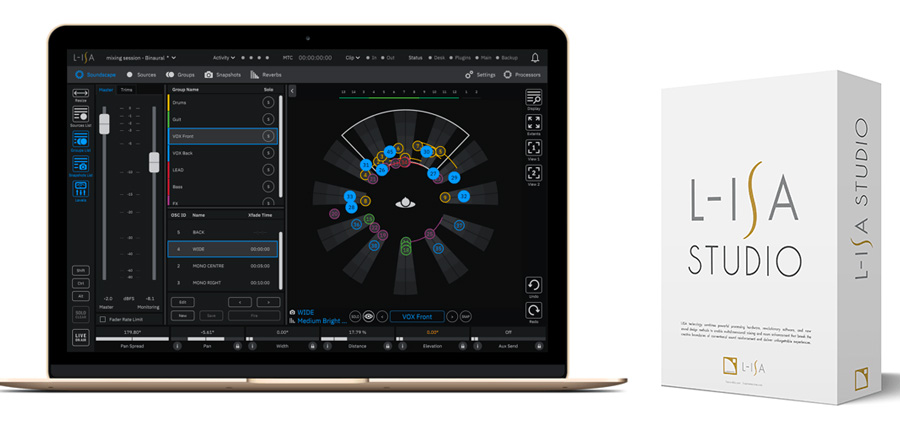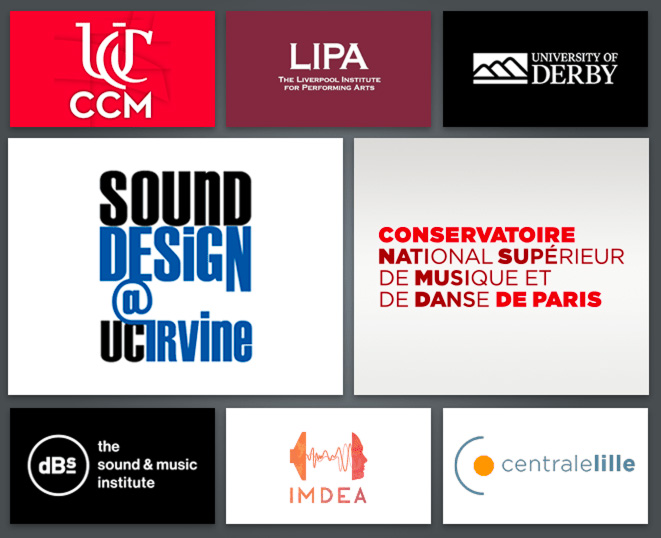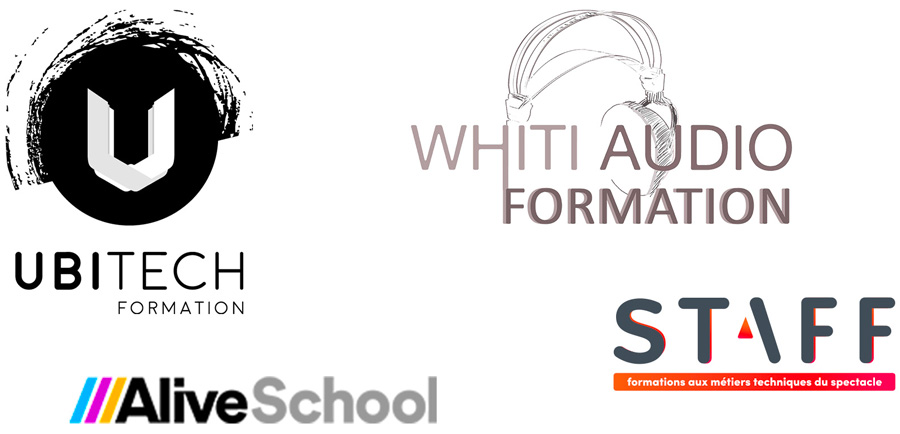Christian Heils’ strength has not only been creating the V-DOSC and greatly contributing to the evolution of sound diffusion from the interferential age to the line array age, he especially had the idea of showing the profession why creating a ‘ligne source’ was more efficient than stacking more and more speaker cabinets, but also teaching how to use this new technology to its full extent.
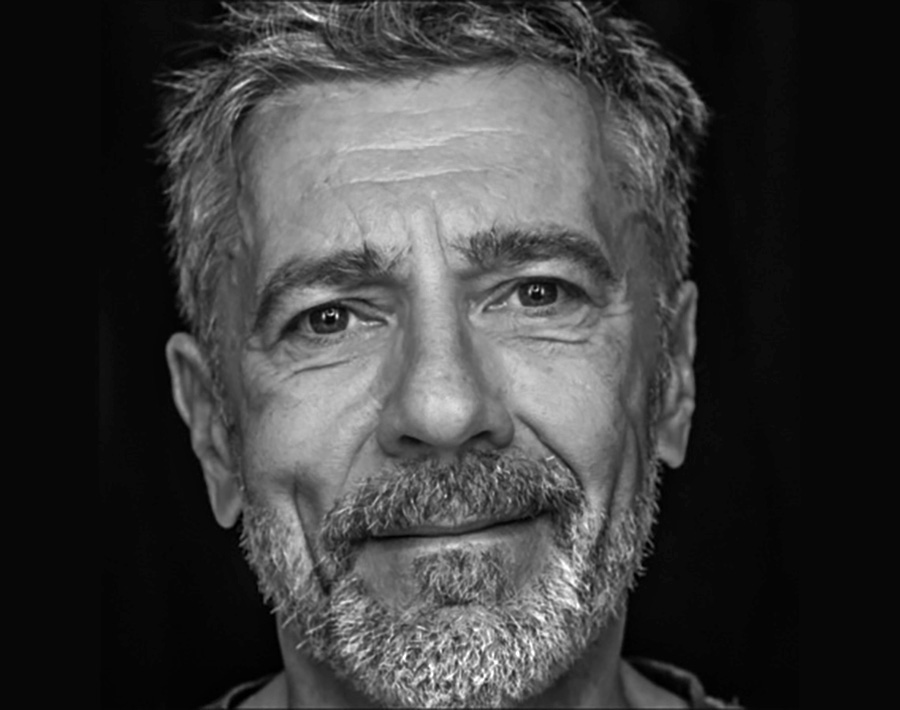
He based L-Acoustics on knowledge rather than on more and more models, on man rather than the machine alone.
Nothing has changed 30 years later. We went to Marcoussis to meet up with Etienne Corteel, Director of Education and Scientific Outreach.
Scientific Outreach is the communication between L-Acoustics and the scientific and educational community, via the publication of articles once or twice a year (mainly in the AES in the fall).
His mission is to elaborate and maintain a tailored training program/course for the professional sound industry. This department contributes to the product strategy of the group, ensuring that the L-Acoustics systems remain intuitive and quick to set up. The team ensures that the methods and expertise of their engineers are understood and used every time for on-the-job setups.
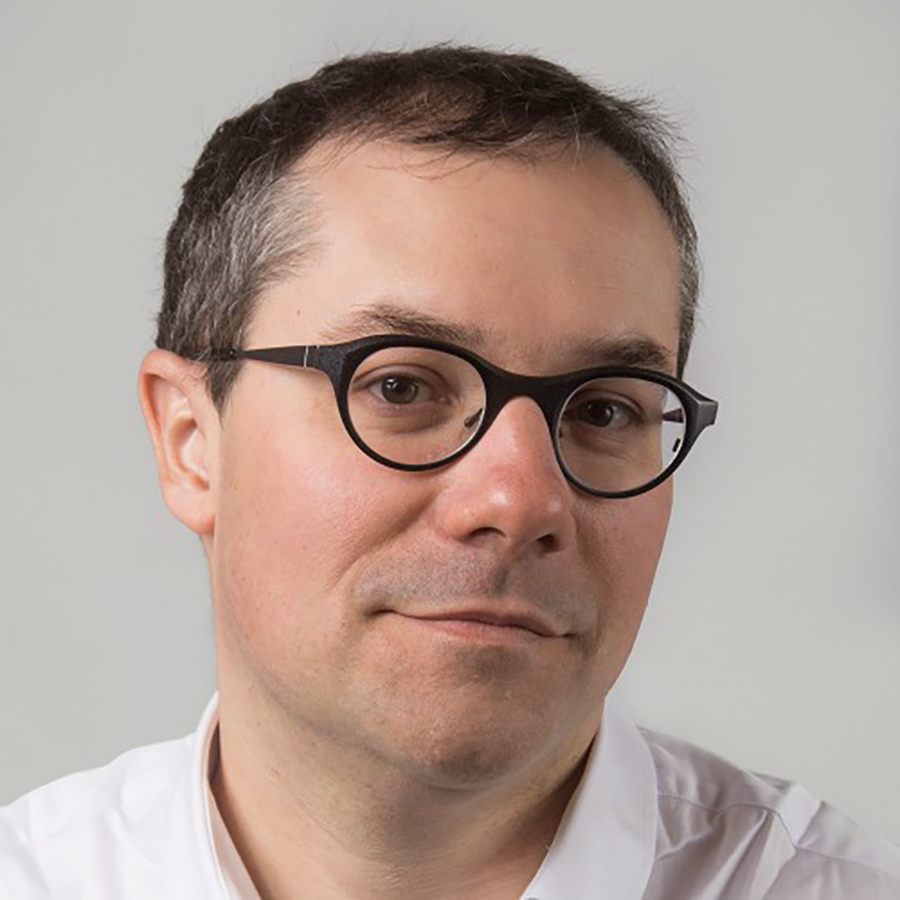
Etienne Corteel : “Some things have changed,” he says smiling, “the word Education comes before Scientific Outreach, it is even more important although our scientific work always has something new to present”.
SLU : Your work and publications are all available on your website?
Etienne Corteel : Yes, click on the Scientific Resources tab, in the pop-up menu there will be three choices: the White Papers, Scientific Publications, and Webinars. By the way, there is a new White Paper on L-ISA concerning spatial rendering for fill systems.

Up until now, front fills used a downmix mono signal. From now on the front rows will benefit from a virtualization made possible from the Scene system (the main rigged system) and the front fills, both altogether creating a spatialization. It’s the same for the rows under the balconies as long as there are at least three speakers aimed towards the audience. There must be an output on the matrix available and a free channel on the amplifiers for each speaker.”
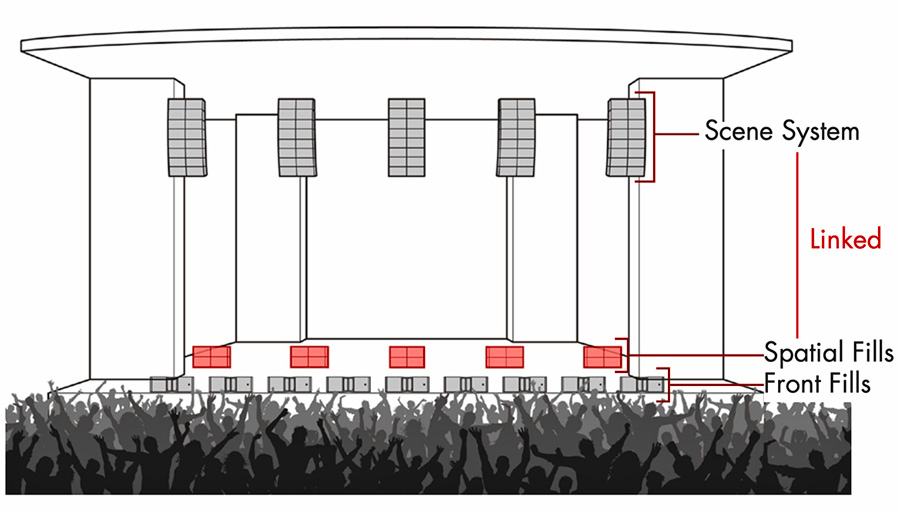
It’s a good compromise between the throw, unmasking potential, and the audiovisual coherence. The White Paper shows how we did it and compares it with more traditional techniques. The WP is available to download on the website, and the L-ISA firmware using Spatial fills is also up and running.
SLU : There is also one concerning the unpredictability of the subs…?
Etienne Corteel : Yes, for those on the ground, because of the public and its number, which is why we suggest rigging them whenever possible, to avoid the uncontrollable (but so desirable) downside of its presence.
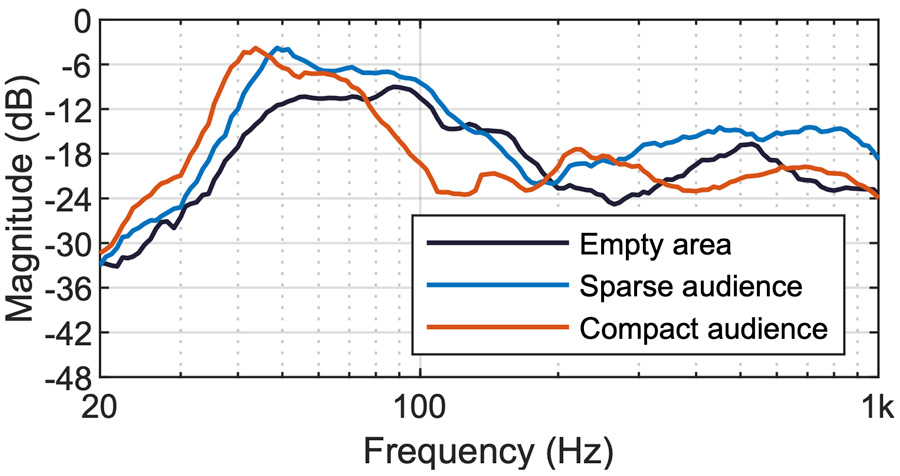
It is published by AES initiated by Thomas Mouterde who is part of the team. It demonstrates the waveguiding effect of the audience on the subs generating a bigger throw. There is a substantial gain measured at certain frequencies and an extra delay in others because of the different paths created by the presence of the audience, this implies having to fine-tune the delay and EQ of the system for a full venue.
SLU : Let’s have a look at the training. Shouldn’t there be a new module of training in order to use the new L-ISA processor to its full extent?
Etienne Corteel : No, however, the people who have already been trained to use the L-ISA may log in to the education platform that has the new course using the latest L-ISA Processor II, to upgrade their knowledge of the system. The course in Soundvision will also be updated with the use of this more powerful system.
SLU : How may we access this new page and what will it look like?
Etienne Corteel : You will find the content of the course in its latest version. In order to favor the post-Covid revival, and as a commercial gesture towards the 4000 technicians that were trained in 2019 and 2020, they will be able to access the platform freely with their former training.
i.e. If a technician was trained in using the K2 in 2019, and also the Kara before that, and has started with the System Fundamentals, he/she will have access to the latest updated content of each training including, for example, Kara II with Panflex, new options on subs, etc…
SLU : May we take a look at the new layout of the website, and hence the organization of the courses either in person or online?
Etienne Corteel : With pleasure. Before the pandemic, we were working on digital learning and hired a person specializing in this field. We worked a lot on this new offer and created content that proved to be very useful for us to be present during the long Covid period.
SLU : However you haven’t abandoned the onsite courses…?
Etienne Corteel : Certainly not. We know that online only training doesn’t work. We want to develop both a system-oriented vision of training and at the same time a very role-specific one, without being focused purely on L-Acoustics products. To do this, two methods are available to us, face-to-face and online. It’s important to know that we always have a live instructor during our remote sessions to encourage interaction.
SLU : Only e-learning is not the solution?
Etienne Corteel : When you start from scratch using a pre-recorded online course, only 20% actually finish it. However, when you combine it with a live instructor during an online course 90% to 95% will finish the modules.
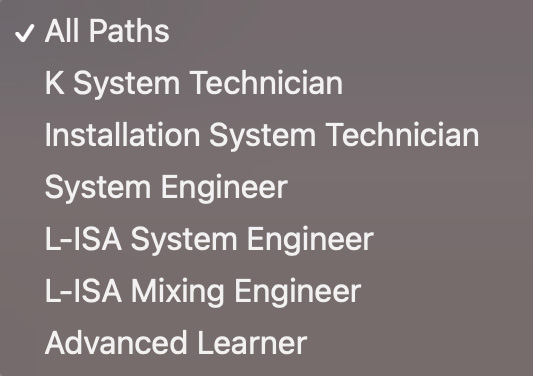
The advantage of online courses, on the other hand, is having the content available to read or review for those who already followed it and other resources for those wanting to go further in-depth.
And, last but not least, online training encourages an exchange between the different students with the presence of an instructor to answer any questions that may arise.”
SLU : How is this training set up? Is there a list or menu to choose from?
Etienne Corteel : We have created Learning Paths to be more in tune with the different lines of work. Each one, except for the Advanced Learner which contains two specific and additional courses, contains the essential System & Workflow and other courses.
SLU : System & Workflow, ex Fundamental System, are the magic words…
Etienne Corteel : Well, sort of (smiling). It opens the doors to our brand, explaining what an L-Acoustics system is, all the way from the rigging to the amplifiers, along with the signal distribution and the front-of-house processor, whether it’s the P1 or L-ISA, we supply a short introduction of the latter.
This module is the beginning of product training, specializing in our products in the catalog. We start from scratch by drawing the venue with Soundvision. Then choose a simple system, a pair of X8 with a SB15m. Then “hook” it up and create a session in Network Manager.
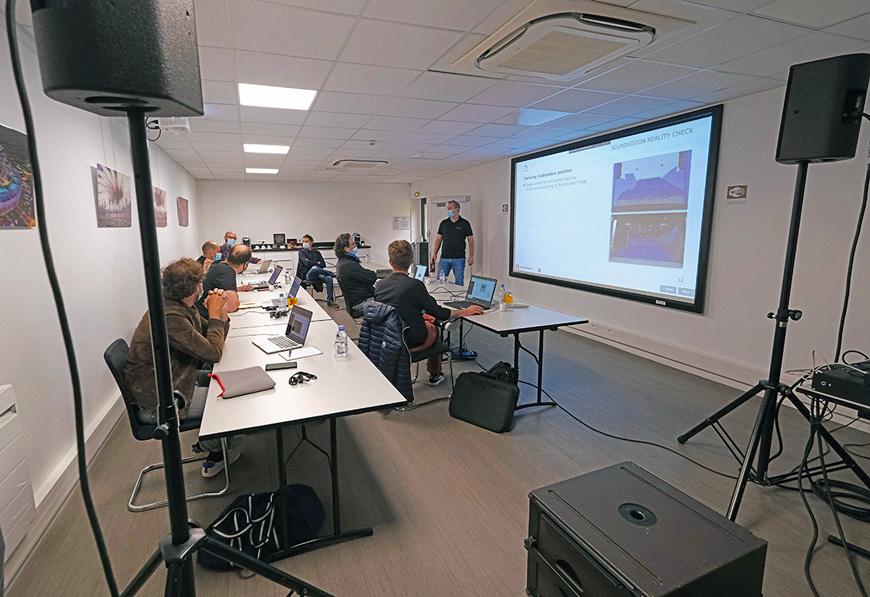
In the afternoon we look at the major steps in a project: specifications, design, implementation, tuning, and use. We finish up by looking at a step-by-step tutorial for the installation in a small theater. By the end of the day, we have a global view of what a system is, what the project is, and where I stand. It’s the basis and a general view which in turn opens up access to the rest of the program.
If you sign in having completed the Fundamental System module, you will not need to go through System & Workflow, since both are equivalent you may update your learning on the educational platform and have access to resources. We recommend taking a look to learn about what’s new.
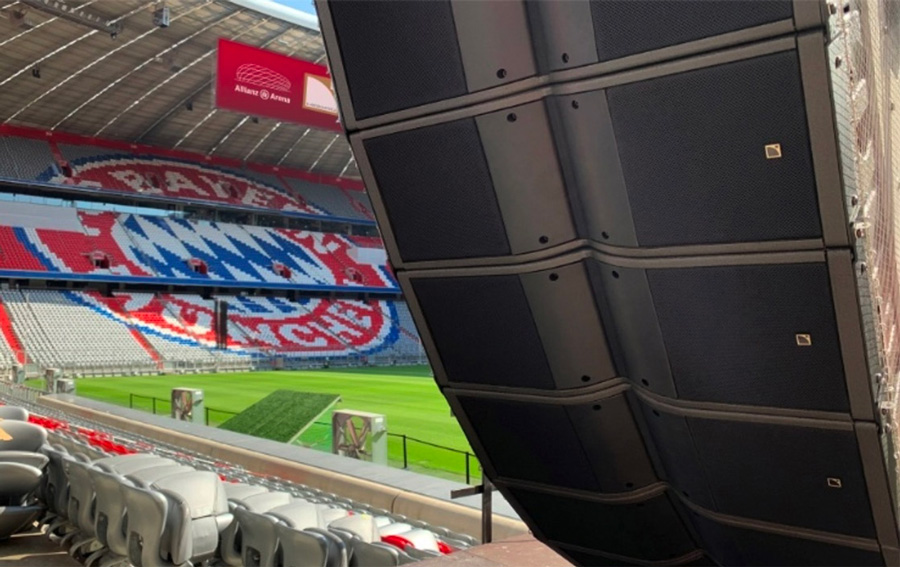
SLU : This very module is requested also for non touring applications?
Etienne Corteel : Certainly. We have in fact started in the last few months the “Installation System Technician” learning path based on a course for in-house installation. The implementation is based on a system engineering consultant’s design, for it to be functional and safe.
The implementation also takes into account the possible differences between the plans on paper and the actual venue, along with many more good tips in order to have a system cabled up, tested, safe and ready for its calibration. This module was eagerly awaited, system integration was the least affected by the pandemic. It is available on-site and online, the content of both is identical.”
SLU : The instructor is the same person in both cases?
Etienne Corteel : No, not necessarily, however, it is always a certified L-Acoustics instructor. We have approximately 90 certified instructors in 25 Authorized Training Centers in 60 countries across the 5 continents. This enables us to give over 650 training courses and certify 6,000 students per year.

SLU : Is there anything new or different for those who are already familiar with the L-Acoustics training?
Etienne Corteel : Yes, we are putting the final touches to what we call the “System Engineer” learning path with two one-day modules for Soundvision and Drive System. It used to be called “System Fundamentals” and only lasted a day, which turned out to be too intense for the student and the instructor.
Now there is a day devoted to each module. This enables a technician who is mainly looking after the set-up to deepen his or her knowledge and not have to spend more than half a day studying Soundvision. The next dates for these courses will be open as of November 2021 with the Drive On-Line and Soundvision courses either online or onsite.
L-ISA
SLU : L-ISA has also doubled..?
Etienne Corteel : It’s because the content has evolved and I got involved in it myself” (he is interrupted)
SLU : You like that don’t you!” (laughing)
Etienne Corteel : Well you don’t spend 20 years working on this type of system and just drop it. The common core between the system part and the mixing part already existed, it is now clearly identified in the “L-ISA Technology” module which schematically deals with design, mixing objects, algorithms and how we will manage projects through two different examples.
The first one is in touring, how to present the technology to the performer and production company, then the actual touring using little guidelines, where the major issue is anticipation. The second is being the in-house person welcoming crews. Then there is a day for the L-ISA Object Based Mixing, explaining the spatial balance with a setup that will work for the entire audience.”
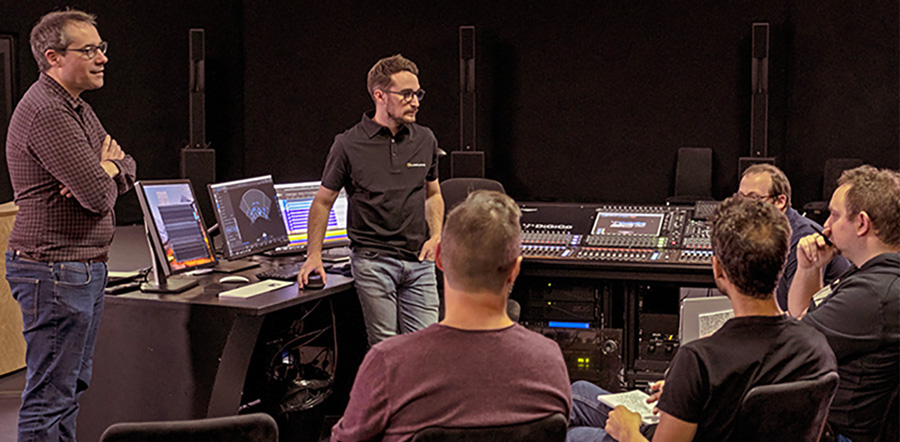
SLU : What is the problem with spatial balance?
Etienne Corteel : Something that is difficult to deal with, the slow speed of sound displacement (laughter). When you are mixing, you are doing it from a certain place in the venue, all the sound objects arrive at the same time, which is not the case for all the audience, and is independent of the system you are using. It’s the same for L-ISA or another system.
You should be able to mix respecting a certain number of rules. To deal with this we give a few guidelines, and by listening with the virtual rendering controller which reproduces the perception of a large venue in a small one and makes it possible to encode the objects with this information.
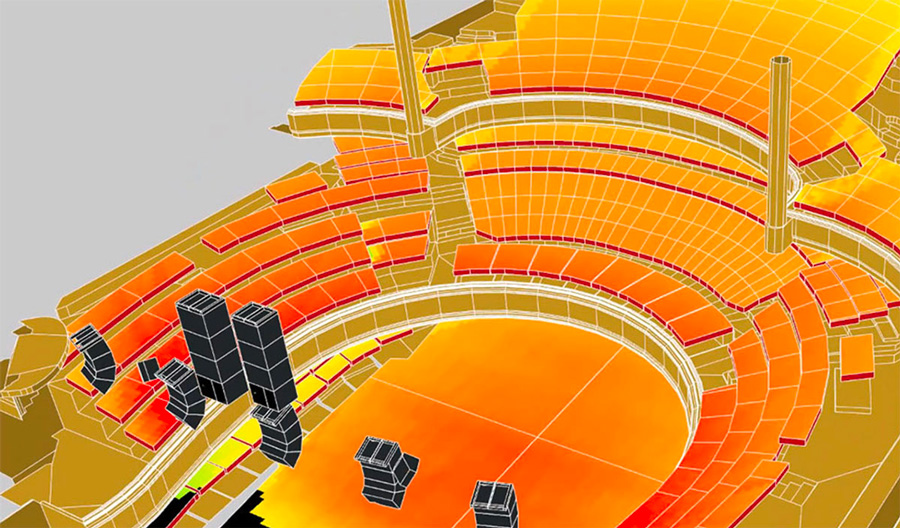
SLU : “This is done via the L-ISA processor?
Etienne Corteel : Yes, however with L-ISA Studio and speakers too. With one click in the software we will know if the drum kit is coherent in, say, three places in the venue. It is very important to understand spatial balance.
It also shows the dynamic mixing, the snapshots, and we explain how to move the objects to update the stage, these movements are more like an effect and are voluntarily made obvious.
The last element of the module is comparing what is heard through the speakers compared to what is rendered in binaural in your headphones, in order for the engineer to get the subtle differences. This allows him/her to make certain changes in their headphones, hence anticipating the output of the speakers. The common basis is just as important for the engineer doing front-of-house mixing and the system technician, with both knowing what the other is doing.
SLU : The L-ISA Loudspeaker System…
Etienne Corteel : It’s about design, controller, speaker layout, tuning, and the new processor. Each module of the L-ISA Technology, be it L-Isa Object-based Mixing, L-ISA Mixing Workshop, or L-ISA Loudspeaker System is one day long. A large portion of those having completed a Technology module and a specialization are wondering if, to be fully up-to-date, they should get training in one of the other modules.
SLU : Is it possible to follow one course after another?”
Etienne Corteel : Yes, in 4 days. Starting with L-ISA Technology, L-ISA Object-based Mixing, L-ISA Loudspeaker System, and finally L-ISA Mixing Workshop which is a “hands-on” course. The participants are divided into groups of two and alternate between the big system L-ISA in the auditorium in Marcoussis and the L-ISA Studio.
Advanced Learner
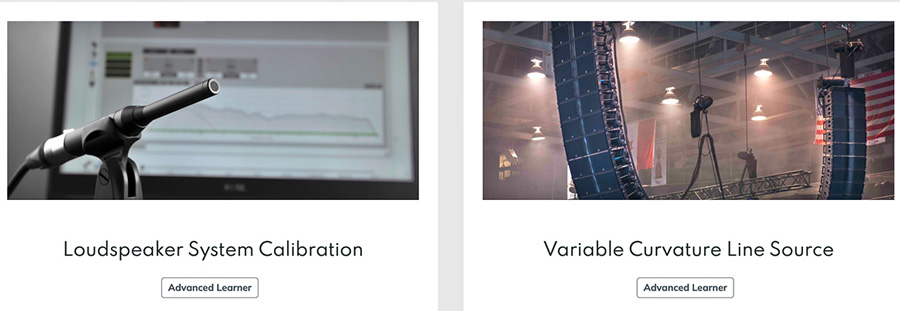
SLU : Advanced Learner is that what used to be called Level 2?
Etienne Corteel : Exactly. The two courses are committed to learning the tools and skills needed, for example, for the Variable Curvature Line Source module, for dealing with the line sources with a variable curvature. This is illustrated using L-Acoustics products, however, it is above all to deepen understanding of the variable curvature of the line source in terms of the directivity control covering of the sound, frequency response, and SPL. It’s a deeper study in the optimization of the line source via adequate mechanical choices and Soundvision used in much more advanced mode.
The other module Loudspeaker Calibration uses the two basic assumptions: it is definitely not to change the design or PA implementation errors. It is to understand what has been optimized by the design and what frequencies should be altered to adapt to the acoustics of the venue in the best way. It is also a big check to certify that the system is operational, and a lot of work is put into measuring and fine-tuning to meet the clients’ and mixers’ needs and desires.”
Last but not least, it is to ensure that the person we are passing it on to has fully understood the reasons for our different choices. It’s a very complete and thorough module that makes for a long day of learning. It was done, at first, for M1, however in the end it is more than that, encompassing recommendations in the placing of the microphones used for the measures, their number, and the means to ensure viable results.
SLU : What does the K System Engineer, KSE course involve?
Etienne Corteel : Typically we ask that the “student” be a super system technician, having followed four courses: System & Workflow, Soundvision, Drive System, and one or more specializations on the K system, plus the two Advanced Learner modules.
Along with that, we request that he/she has a “hands-on” experience with L-Acoustics products, and has proficiency in Soundvision and LA Network Manager. All in all the learning the courses and experience of using them is what is needed. Only following the courses is not enough.
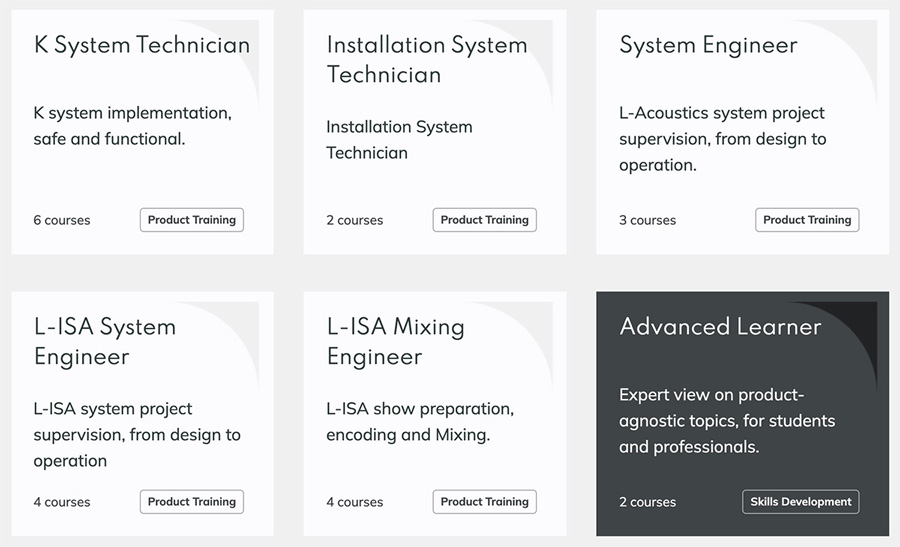
SLU : Is the system design, per se, covered entirely by the Soundvision course?
Etienne Corteel : It implies someone has mastered Soundvision and has followed the Variable Courverture Line Source course giving them the knowledge needed to optimize the line source. This said it is possible that in the future we will develop aspects dedicated to design per se. We are aware that we haven’t looked at every aspect possible in our courses.
SLU : Would it be an idea to offer some courses to architects, acoustical engineers, prescribers..?
Etienne Corteel : We know that we haven’t reached the end yet (smiling) and that we must continue to develop the teaching. We have our work cut out for years to come. Our advantage is that we have a good team in place with the right people and a well-structured system.
SLU : Could you give us some details?
Etienne Corteel : Our team consists of, on one hand, Feild Application Research, whose role is to analyze users’ habits, helping with the design, calibration, and use of the sound systems. This includes the description and demystifying of acoustic phenomena in large venues, for example, the influence of the audience with subs placed either on the ground level or rigged.
We also have an Education Programs team looking after the creation and structuring of training courses, and the actual hosting and layout of the learning platform.
And finally, there is what we call Education Operation which looks after transferring the program to our 90 instructors worldwide, whether they are company employees, consultants, or Authorized Training Centers, and the management and organization of the courses on our eStore onsite or on-line recipients.”
SLU : Do you write up things in English or French?
Etienne Corteel : English. We all have a sufficient technical level in English for this to be done. Sometimes our wording will make our fellow Americans chuckle, however, we do the same when they try French!
SLU : How many courses are there, be it online or in-person?
Etienne Corteel : There are 15 one-day courses. So, if you want to spend two weeks with us it is possible (laughter) however we suggest two or three-day stints, our classic seminars, a bunch of five combining a System & Workflow, a few K modules, and a Soundvision or Drive System module. This is a very good background of knowledge.
SLU : These 15 courses are available worldwide?
Etienne Corteel : Yes. L-ISA modules, on the other hand, are not everywhere because we still only have a small number of trainers.
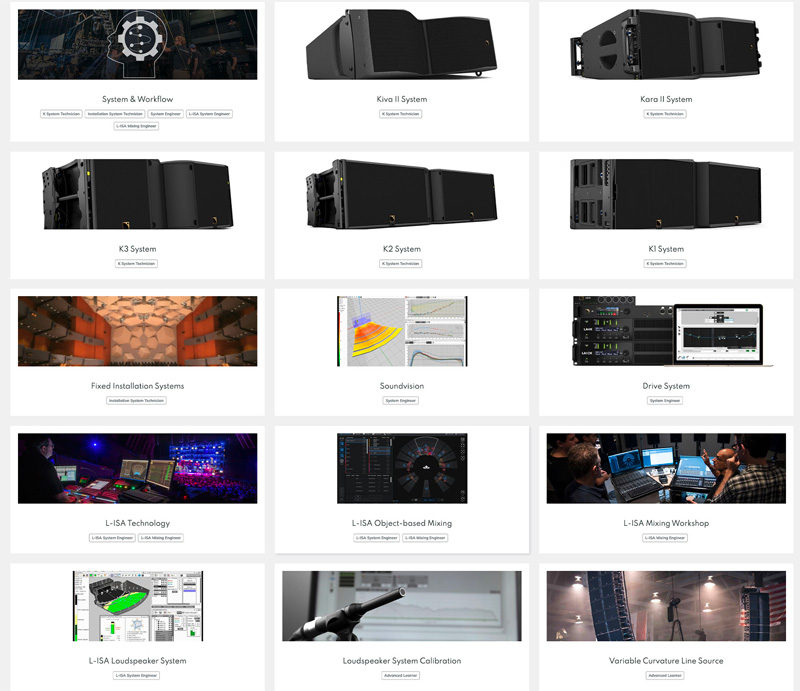
SLU : What is the typical profile of your instructors in France?
Etienne Corteel : Firstly there are our own in-house engineers, some members of the educational team and some consultants already well known such as Vladimir Coulibre, Maxime Menelec, not to forget Alizée Tricart the newcomer.
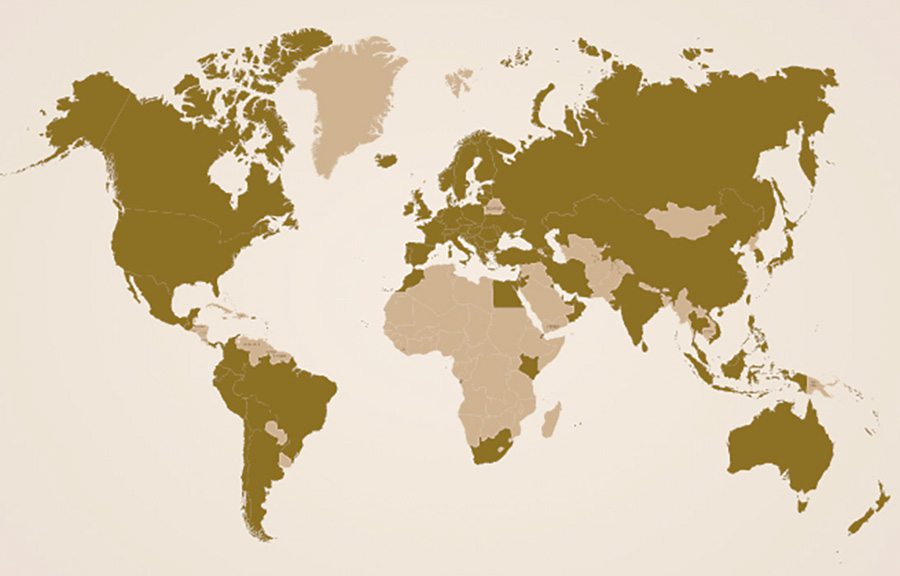
SLU : The content of the courses is in English I take it?
Etienne Corteel : Yes, and our instructors are able to teach in English, however the advantage of having Authorized Training Centers and teachers in each Country enables you to speak in your own language to help with the understanding of the in-person or online courses that are in English. A good understanding of the technical terms in English is a must in our line of work.
SLU : How many courses already exist in both online and in-person learning?
Etienne Corteel : Six. System & Workflow, Fixed Installation System, Soundvision, Drive System, L-ISA Technology, and L-ISA Loudspeaker System.
Learning Fellowship
SLU : Aside from the onsite and online courses, and the ability to go back and reread a year long, you have also added a social network on your website?
Etienne Corteel : Thats right. At the latest, 6 hours after passing and having the course validated, the student can access this private part of the website. The student can identify him/herself along with an ID photograph if they wish and stipulate their field of work.
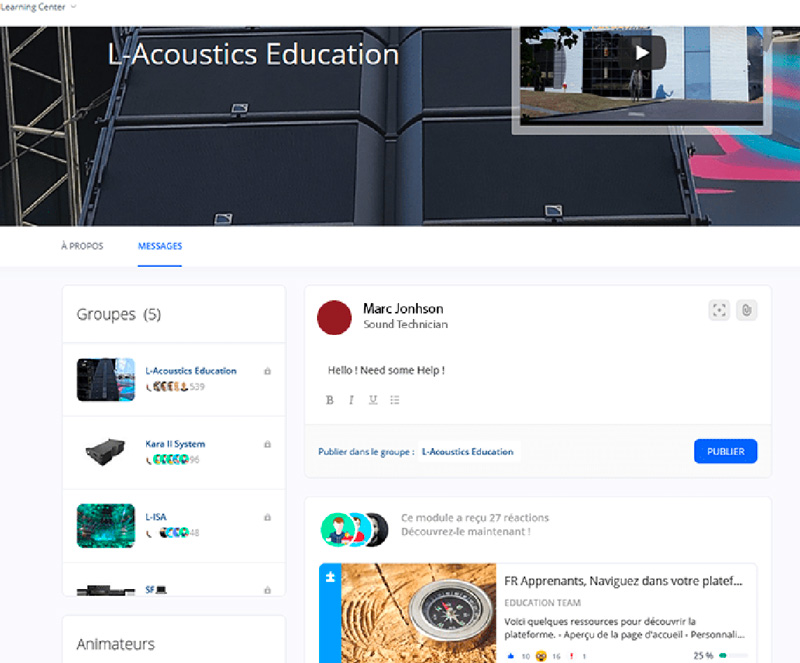
“We also include the different courses they followed, so they may access specific groups with other certified students. The instructors also have access to this information, students can feel free to ask questions. Since we oversee this network, we are pleased to say that it often happens that the students help each other, which is also the goal of this network.
There are the tags “I like it” or a less usual one “please update” which enables us to keep informed and, if need be, offer our help. It is also possible to leave comments. We also intervene sometimes, via a notification system, to point out the new items. We are thinking about extending access to this reserved part of the website to last more than a year.
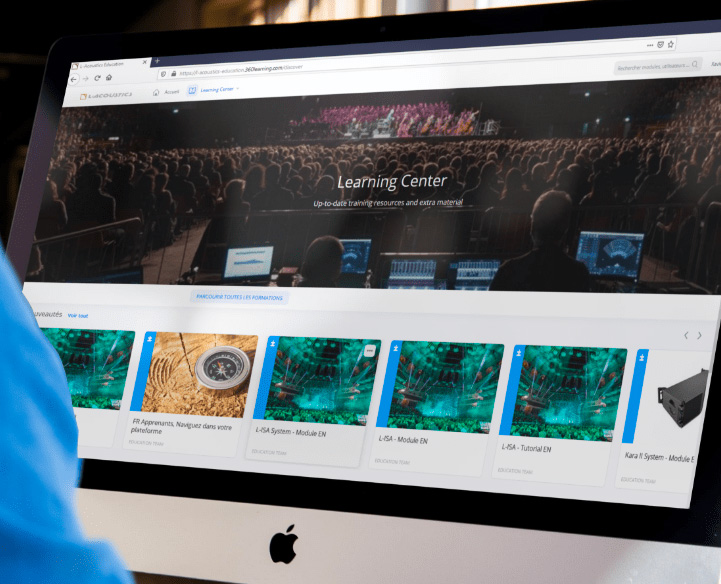
SLU : Is it popular Collaborative Learning?
Etienne Corteel : This summer there were 1,000 different connections a month, by the 4,500 people signed up. Our statistics started in 2014, which was when our training program evolved, and since then we have had 12,000 participants worldwide. System Fundamentals had a participation of over 9,000 people.
During the year before Covid, in 2019, we did 280 sessions of System Fundamentals, and 60 of Variable Curvature Line Source. On average there are 10 participants per session. This year, in 2021 because of the uncertainty regarding the pandemic, we will surpass 2020 with the growing online courses. It goes without saying that the training that requires the use of our products and listening to the result of their work remains onsite.
SLU : What do you think could be done to increase the number of participants?
Etienne Corteel : We are aware that the cost for the participant is one of the reasons that is slowing its growth. However, it is a reasonable price to ask considering it only covers the costs of the technical trainer and the organizing of these courses, it doesn’t include the costs involved in the updating and developing of the modules. It is also important that there is a certain cost involved, it encourages a certain commitment from the student.
SLU : If I understand correctly there are 3 different learning possibilities: the manuals, the training courses, and online communication?
Etienne Corteel : Our information scheme starts with the documentation. There is a team entirely devoted to the writing of the manuals, everything that has to do with the safety and the online documentation of the software. Then there is the training and outreach, and also recently video tutorials on YouTube, such as a complete series of videos for L-ISA Studio and the L-ISA Controller done by Scott Sugden with the participation of the L-ISA team.”
“The main outline is the training. If there is a need for more information on a very specific subject there is the manual, however, if it’s more an overview that is required, the videos and films used for the launching should do the job. Of course, if there is a new product launch, all the platforms are updated.
SLU : Is there specific training just for the L-ISA Studio?
Etienne Corteel : There is not a special module per se, but by following the L-ISA Technology course one gets a good idea and an overall view of what L-ISA is, if needed there are video tutorials and contextual help. It’s a first for us.
Schools, Universities and Training Centers
SLU : With the outreach program and teaching are you aiming for schools and Universities?
Etienne Corteel : Absolutely. We have a partnership with the Music and Dance Conservatory of Paris, for their post-degree training in sound the FSMS (Formation Supérieur aux Métiers du Son), so the students may participate in all our modules at Marcoussis throughout their studies.
We also provide the same opportunity to students doing their Masters of Sound Design at the University of California in Irvine. This is all going very well. In all of our courses, it is possible to learn about sound systems. We don’t just deal with sound desks and microphones, but everything that’s involved in sound, which we believe is very useful in schools.
SLU : About the schools, do you use authorized training centers so that the participants may receive scholarships or financial help?
Etienne Corteel : Yes, we work with Ubitech, offering a certified 5-day course including System & Workflow, two K modules, and two days devoted to calibration for it to be easier to take in. These courses are provided by one of our instructors.
There is Whiti-Audio for L-ISA training, also for 5 days onsite in Marcoussis with our instructors and technical infrastructure. We start with System & Workflow, then the 4 modules of L-ISA. We also are in collaboration with the Alive School in Tourcoing, and Staff in Nantes. We like the idea of creating a network of partners spread out geographically.
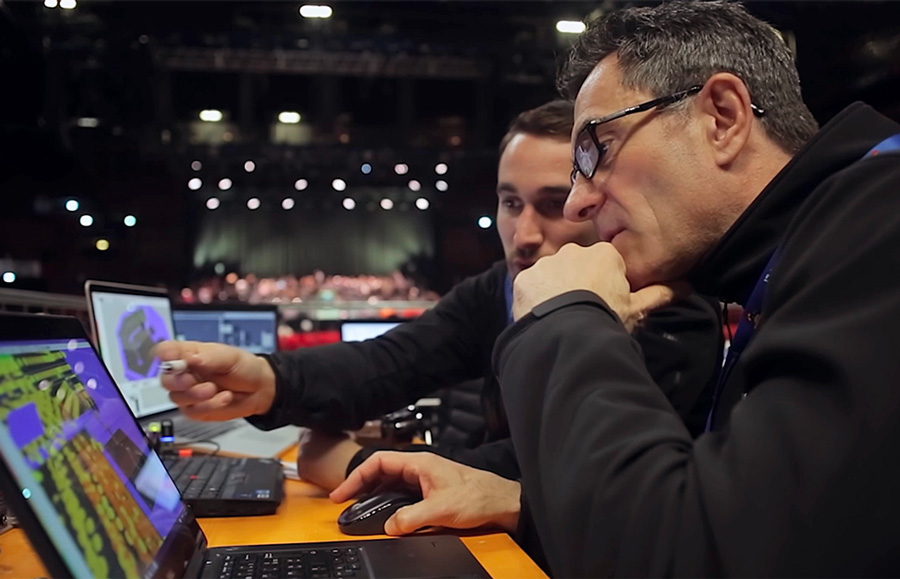
SLU : Do you prefer to train or delegate to specialized agencies, and supply them with the content?
Etienne Corteel : Our main work is to imagine, build and distribute the technology of sound systems, and give people the tools and skills to use them as best as possible.
To be more specific creating the training content and the instructors is our main activity, but we are always more than happy to welcome technicians and keep a good relationship between us. Hence, we will keep the three possibilities: online, here on-site, or in the different centers worldwide with our instructors.
SLU : Where can one find the available courses, to sign up for?
Etienne Corteel : On our Education page in Courses on our website L-Acoustics, each course is described in detail. Once you have clicked on Book a Session you are rerouted to the eStore, here you can choose the country, the Path, or by course and by month.
As you can imagine, after an interview with Etienne Corteel, your brain feels a bit “fried”, however it is evident that the man and his crew make it easier to understand what had been, for the past 30 years, an empiricism.
Yes, the hardware has made great progress, and as always the weakest link has been the person using it, which L-Acoustics fully understands. L-Acoustics has strive to change this. Go and check out their website you will learn so much, and feel better because of it.
More information on the L-Acoustics website



